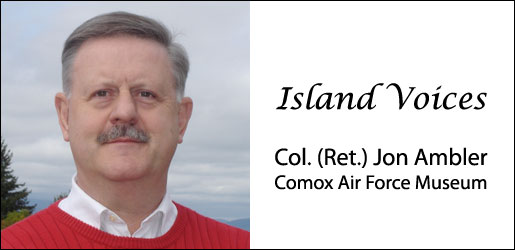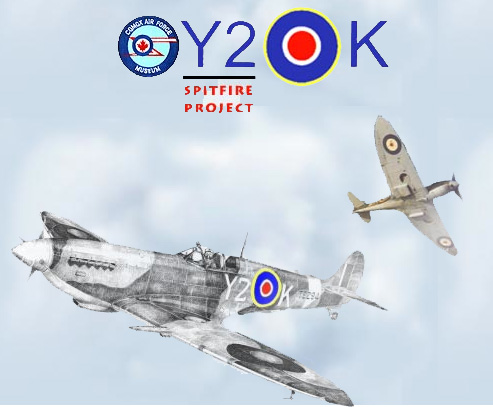Current Article ∙ Archive ∙ Back to Island Voices
Nobody asked me, but what are the facts of the Y2K Spitfire Project?
In 2000 the Comox Air Force Museum (CAFM) used a $250,000 Heritage Grant (Public Funds) to buy pieces of a scrapped/wrecked Spitfire. The plan was to restore it to flying condition, callsign Y2K. This is the callsign used by 442 Sqn during WW2, notable because the Sqn is now resident in Comox. The project was subsequently funded entirely by donations and grants from the general public. The funds were used to hire an engineer to do the restoration and pay for materiel. The best years saw approx $40,000 raised through the remarkable efforts of volunteers. However, with $2 million needed to finish the project, it became clear that the goal that “Y2K Will Fly Again” is fully 50 years away, without any inflation or taking into account the world’s current economic troubles.
Restoration proceeded slowly, with the pace dictated by funds, and by 2009 only the fuselage and tail, the two simplest parts of an aircraft, were completed. It still needs wings (which alone cost $700,000) an engine, fuel system, instruments and radios, hydraulics and landing gear. Additionally, concerns were raised about operating the finished aircraft, since facilities to fly, hangar, maintain, insure, fuel and display it were non-existent. In 2008 a detailed options analysis confirmed that the project would have to cease and the unfinished aircraft be disposed of unless a new owner could be found. Consequently, the aircraft was formally offered to all the other Air Force and Canadian Museums, and, because of their knowledge of the resources needed to complete Y2K, there was absolutely no interest.
Subsequently, Vintage Wings of Canada, a legitimate Heritage Foundation, offered to take over the project in-situ, provide the estimated $2 million to restore it to flying status, and initially display it in Comox before donating it to the Heritage Aircraft Foundation. It would then be flown in the National Capital area for the benefit of all Canadians on significant memorial occasions, and elsewhere across Canada to inspire Canadians with our heritage. Because of the financial commitment that Vintage Wings will make, they wished to own the unfinished aircraft at nominal cost. This has been endorsed and on 1 April 2009 they took over the completed pieces for the $1 nominal cost, as is common practice. It is anticipated that Y2K will fly late in 2011.
This action permits the realization of a project that will otherwise end, one that is dear to numerous Veterans and other Canadians. This project will serve to highlight and promote our aviation history, particularly during Canada’s Centennial of Flight in 2009, and in the future.
The Y2K Spitfire Restoration Project is open to the public at the Comox Air Force Museum on Saturdays and on other days by appointment.
For more information contact:
Comox Air Force Museum
Military Row/Ryan Road, Comox, B.C.
Tel. 250-339-8126
www.comoxairforcemuseum.ca
“To live in a nation and not know its history is akin to being a leaf and being unaware of the tree.”
Current Article ∙ Archive ∙ Back to Island Voices


